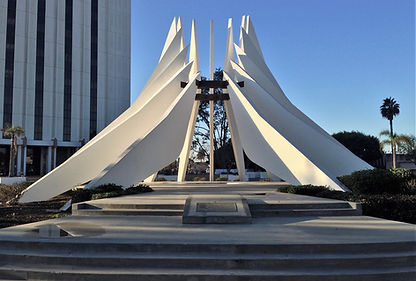New Year Is Scheduled For Completion Of Some Street Repairs
- Citizens Coalition Admin

- Nov 24, 2024
- 4 min read
The Compton City Council voted unanimously to allow the city to use funding allocated from the Road Repair and Accountability Act of 2017 (or SB1) to help stabilize and improve roads in the city.

In a 5-0 vote during their May 14 regularly scheduled meeting, the council gave the thumbs up for the city to use funds coming from the Road Maintenance and Rehabilitation Account (RMRA) to bolster street repairs.
Passed into law and signed off by Gov. Gavin Newsom, SB1 was created to help municipalities across the state of California shore up monetary shortcomings to deal with transportation and street work.
For the 2024-2025 fiscal year, Compton will receive a little more than $2,4 million ($2,459, 937) in funding from SB1. This is the sixth year the City of Compton has received funding from SB1.
With Compton bogged down with landmines in the form of potholes throughout the city, the monies taken from SB1 will dominate on that front. Street repairs or the lack thereof have been the ire of citizens for years in Compton.
Some of the items the city plans on using the money for include improving public transportation, road maintenance and safety upgrades. John D. Strickland Jr., director of Public Works for the City of Compton, made the presentation in front of the council during the last part of the meeting.
The proposal was signed off by City Manager Willie A. Hopkins Jr.
The move by the City of Compton is paramount. According to supporting documents listed to bolster the City’s argument for the needed funding from SB1, the April 2023 California Statewide Local Streets and Roads Needs Assessment labeled the streets in Compton as “at risk” condition.
Projects Scheduled for Completion by January 1, 2025
The plan for the City of Compton to use the Road Maintenance and Rehabilitation Account (RMRA) funding includes street repair and maintenance work under the City’s Annual Residential Rehabilitation Project which includes:
Walnut Street,
Walnut Park Drive,
Walnut Park Way,
Greenleaf Blvd. (Central Avenue to Whitemarsh Avenue),
Greenleaf Blvd. (City Limit East to Alameda Street),
Alameda Street West (City Limit North to City Limit South),
Alameda Street East (City Limit North to City Limit South), and
Bradfield Avenue.
According to the presented documents, the lifespan of the new roads and repairs is 10-20 years. The completion was scheduled for September 2025.
The city’s layout for fixing its roads includes streetscape beautifications for pedestrians and for bicyclists. According to the City’s Wilmington Avenue Safe Streets Pedestrian/Bicycle Improvement Plan, several areas are being targeted for an upgrade. The locations are Wilmington Ave. and Compton Blvd. West and Compton Blvd. East.
The improvement of landscaping, bus shelters, curb ramps, and raised median islands along the Wilmington Ave. corridor (Rosecrans Ave. to City Limit South) is scheduled to complete by Jan. 1, 2025. The project is expected to be completed by the New Year. Those improvements are also expected to last 10-20 years.
Projects Scheduled for Completion by September 2026
For the Compton Blvd. West location (Willowbrook Ave. to West City Limits), bike lane installation, lighting, and pedestrian crossings at 15 intersections are on the docket. Residents can also see upgrades in traffic markings and the removal and replacement of ADA ramps. The expected completion date is September 2026.
The makeover along Compton Blvd. East (Willowbrook Ave. to East City Limits) includes installation of Class II bike lanes, replacement of traffic markings and ADA ramps and sidewalks relocated and altered. The expected completion date is September 2026.
Courtesy photo as lead photo/Wikimedia Commons
More about SB1:
The California Road Repair and Accountability Act of 2017, commonly referred to as SB1, is a state law designed to generate funding for critical transportation infrastructure improvements in California. Signed into law by Governor Jerry Brown on April 28, 2017, this legislation aims to address California's aging and deteriorating transportation system, including roads, highways, bridges, and transit systems.
Key Features of SB1:
Revenue Generation:
Increased Fuel Taxes:
A 12-cent per gallon increase in the gasoline excise tax.
A 20-cent per gallon increase in the diesel excise tax.
A 4% increase in the diesel sales tax.
Annual Transportation Improvement Fee:
A fee on vehicles based on their market value, ranging from $25 to $175.
Zero-Emission Vehicle Fee:
Starting in 2020, owners of zero-emission vehicles from model year 2020 onward pay an annual $100 fee.
Funding Allocation:
Estimated to generate approximately $5 billion annually.
Funds are split between state and local projects, with significant portions allocated to:
Road maintenance and repair.
Safety improvements on state highways and local roads.
Public transportation projects.
Trade corridor enhancements.
Bicycle and pedestrian projects.
Accountability Measures:
The law includes provisions to ensure transparency and accountability:
Establishment of the Independent Office of Audits and Investigations.
Requirements for cities and counties to report how funds are used.
Legislative Safeguards:
In 2018, California voters passed Proposition 69, which amended the state constitution to ensure that SB1 revenues could only be used for transportation purposes and not diverted to other programs.
Rejection of Repeal Attempt:
In 2018, an effort to repeal SB1 through Proposition 6 was rejected by voters, maintaining the funding mechanism established by the act.
Projected Impact of SB1:
Road Improvements: Since its implementation, the funding has contributed to repaving roads, repairing bridges, and improving traffic safety measures.
Transit Enhancements: Public transit systems have benefitted from expanded service and upgrades to infrastructure.
Economic Benefits: Improved transportation infrastructure supports the economy by reducing congestion and facilitating the movement of goods and people.
Controversies:
Increased Costs: Critics argue that the increased taxes and fees place a financial burden on Californians, especially those with lower incomes.
Accountability Concerns: Some opponents question whether the funds are always used efficiently or effectively.
Overall, SB1 represents a significant investment in California's transportation future, addressing long-standing infrastructure challenges while emphasizing the need for transparency and efficient use of public funds.






Comments